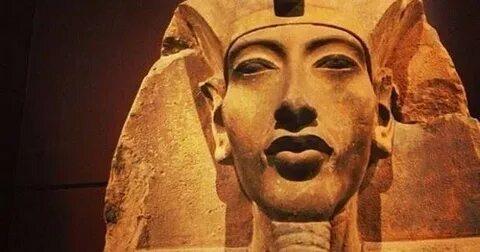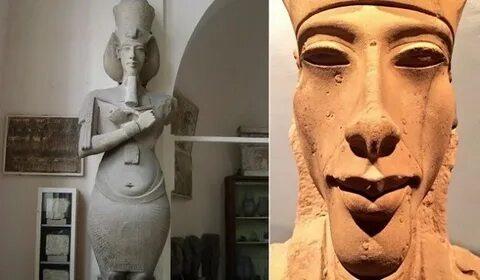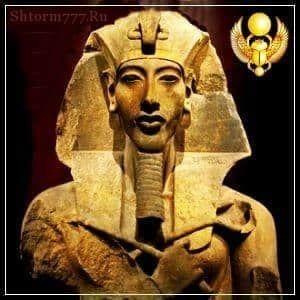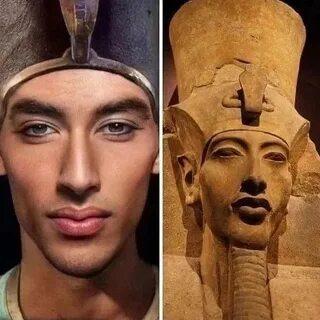Akhenaten: The Mystery of the Pharaoh with Non-Human Features? Discover the Theories that Suggest an Extraterrestrial Origin!
Akhenaten: The Pharaoh from Another World?

Akhenaten, the enigmatic pharaoh of the 18th Dynasty, has puzzled historians for centuries. His radical religious revolution, centered on the worship of the sun god Aten, broke with millennia of polytheistic tradition in ancient Egypt. However, it is not only his spiritual approach that has captured attention, but his strange physical appearance, which has led him to be the subject of theories suggesting a more than human origin.
Akhenaten was born Amenhotep IV, but in the fifth year of his reign he changed his name to reflect his exclusive devotion to the god Aten, whom he considered the one true god. The capital of his kingdom was also moved to the new city of Akhetaten (modern Amarna), where the pharaoh and his court lived in seclusion, worshipping the sun god in open temples, a far cry from the Egyptian traditions of closed temple worship.

What has generated the most controversy, however, is not his religious reform, but his appearance. Depictions of Akhenaten in art show him with an elongated skull, stretched neck, wide hips and thin limbs – traits that do not match conventional images of the powerful, muscular pharaohs who ruled before and after him. These physical characteristics have led some researchers and theorists to raise the possibility that Akhenaten was a non-human or hybrid being.
Conventional theories suggest that Akhenaten may have suffered from some kind of genetic syndrome, such as Marfan syndrome or Fröhlich syndrome, which would explain his unusual physical features. However, more daring theorists believe that he may have descended from otherworldly beings. These theories are supported by ancient Egyptian texts that mention a predynastic era when “gods” ruled Egypt before the arrival of human pharaohs.

One of the most intriguing accounts supporting this theory is the myth of Zep Tepi , or the “first age,” a mythical period when the gods descended to Earth to establish order and civilization. Some believe that Akhenaten, with his elongated skull and connection to the heavens, could have been a descendant of these gods, or even a human-divine hybrid who sought to return Egypt to an era of direct communion with the gods.
Akhenaten’s intriguing relationship with his wife, the famous Nefertiti, has also raised questions. Nefertiti, often depicted with similarly unusual features such as an elongated skull, may have shared the same mysterious origin. Statues and reliefs from the Amarna period show the royal couple with bodies that do not fit into traditional Egyptian artistic canons, adding to the mystery about their nature.

In addition to his physical appearance, Akhenaten also introduced a radically different artistic style, known as Amarnian art, which was a departure from the idealized depictions of earlier pharaohs. Images of the royal family were more naturalistic and often showed the pharaoh and his family in intimate scenes, playing with his daughters or interacting in an affectionate manner, which contrasts with the rigid and majestic depictions of earlier pharaohs.
Akhenaten’s legacy has been equally enigmatic. After his death, his son Tutankhamun, one of the most famous pharaohs in history, ascended to the throne. Under his reign, Egypt returned to polytheism and the traditional worship of Amun. Akhenaten’s city was abandoned and Akhenaten’s name was erased from official records in an attempt to erase his memory.
Despite this attempt to erase his legacy, Akhenaten remains a fascinating figure who defies conventional explanations. Was he a religious visionary seeking to bring Egypt closer to a deeper spiritual truth? Or was he, as some suggest, an extraterrestrial being who left an indelible mark on human history?

The enigma of Akhenaten remains unsolved, but his story continues to captivate the imagination of archaeologists, historians, and theorists of the unexplained. As more archaeological discoveries come to light and new ancient documents are explored, perhaps one day we will be able to fully unravel the mystery of this unique pharaoh in Egyptian history. Was he simply a human with a radical vision, or a visitor from another world? The answers, for now, remain hidden in the sands of time.
A revolutionary king or an alien being? Akhenaten’s elongated skull, peculiar physique, and his devotion to a singular sun god have sparked theories of divine or extraterrestrial origin. Did this enigmatic ruler seek to reconnect Egypt with celestial gods, or was he himself their descendant? His mysterious legacy, erased by successors, continues to puzzle and intrigue.






